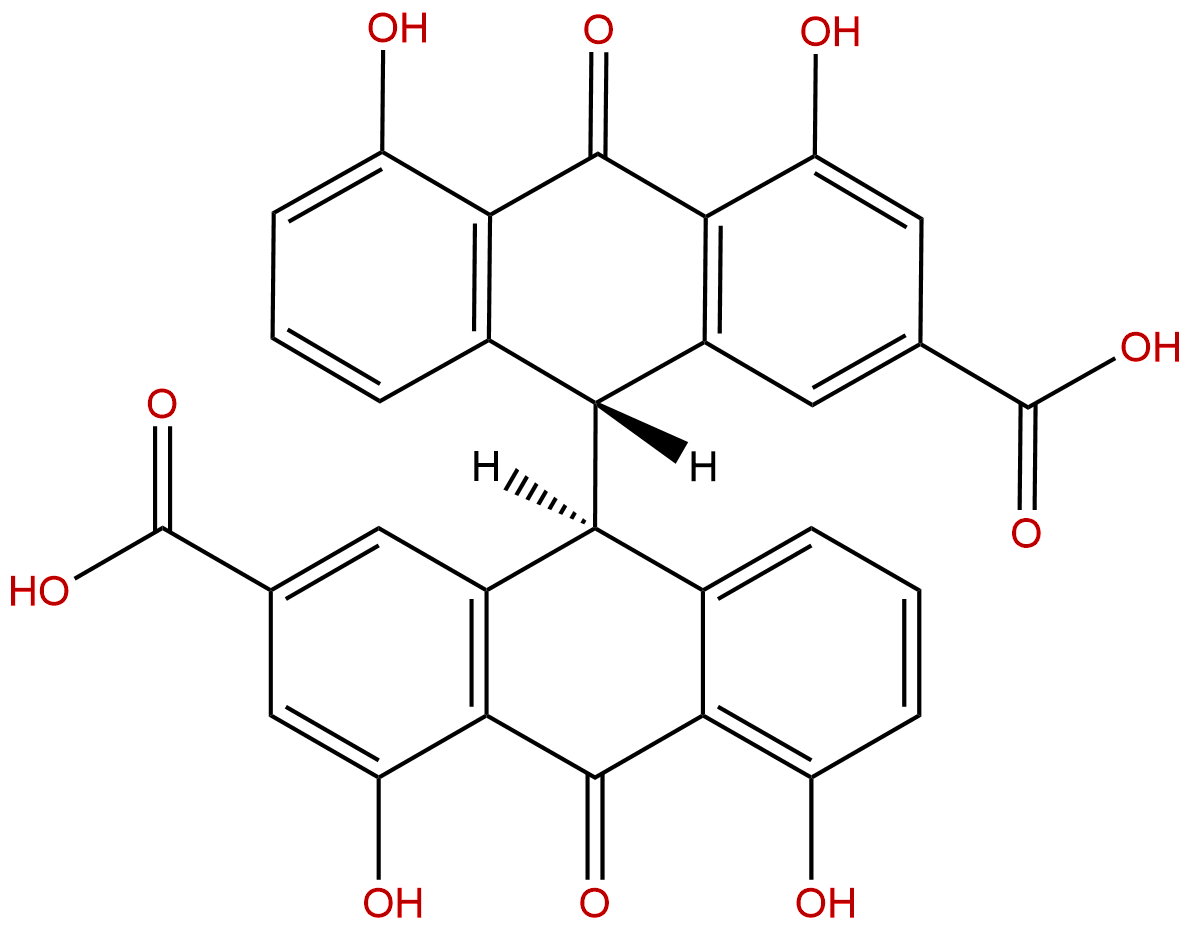
Sennidin BCAS No.:517-44-2
|
||||||||||
 |
|
|
||||||||

| Catalogue No.: | BP1291 |
| Formula: | C30H18O10 |
| Mol Weight: | 538.464 |
Product name: Sennidin B
Synonym name:
Catalogue No.: BP1291
Cas No.: 517-44-2
Formula: C30H18O10
Mol Weight: 538.464
Botanical Source: Sennae Folium
Physical Description:
Type of Compound: Anthraquinones
Purity: 95%~99%
Analysis Method: HPLC-DAD or/and HPLC-ELSD
Identification Method: Mass, NMR
Packing: Brown vial or HDPE plastic bottle
Storage: Store in a well closed container, protected from air and light. Put into refrigerate or freeze for long term storage.
Whenever possible, you should prepare and use solutions on the same day. However, if you need to make up stock solutions in advance, we recommend that you store the solution as aliquots in tightly sealed vials at -20℃. Generally, these will be useable for up to two weeks.
The product could be supplied from milligrams to grams
Inquire for bulk scale.
Description:
Sennidin B stimulates glucose incorporation in rat adipocytes.
References:
Appl Environ Microbiol. 1994 Mar;60(3):1041-3.
Isolation of a human intestinal anaerobe, Bifidobacterium sp. strain SEN, capable of hydrolyzing sennosides to sennidins.
A strictly anaerobic bacterium capable of metabolizing sennosides was isolated from human feces and identified as Bifidobacterium sp., named strain SEN.
METHODS AND RESULTS:
The bacterium hydrolyzed sennosides A and Sennidin B to sennidin A and Sennidin B via sennidin A and Sennidin B 8-monoglucosides, respectively. Among nine species of Bifidobacterium having beta-glucosidase activity, only Bifidobacterium dentium and B. adolescentis metabolized sennoside B to Sennidin B, suggesting that the sennoside-metabolizing bacteria produce a novel type of beta-glucosidase capable of hydrolyzing sennosides to sennidins.
Phytomedicine. 2008 May;15(5):373-7.
Transport of sennosides and sennidines from Cassia angustifolia and Cassia senna across Caco-2 monolayers--an in vitro model for intestinal absorption.
Laxative effects of Senna preparations are mainly mediated by rheinanthrone, a metabolite formed in the intestinal flora from dianthrones. Nevertheless, it was not clear whether dianthrones are bioavailable at all and contribute to the overall effects of this important medicinal plant.
METHODS AND RESULTS:
Using the Caco-2 human colonic cell line as an in vitro model of the human intestinal mucosal barrier, the bioavailability of dianthrones was studied in apical to basolateral (absorptive) and basolateral to apical (secretive) direction. Permeability coefficients (P(c)) and percent transport were calculated based on quantitations by HPLC. From the data obtained it was concluded that sennoside A and sennoside B, as well as their aglycones sennidin A and Sennidin B are transported through the Caco-2 monolayers in a concentration-dependent manner and their transport was linear with time. The absorption in apical to basolateral direction was poor and P(c) values were comparable to mannitol. The transport was higher in the secretory direction, indicating a significant efflux (e.g. by efflux pumps) of the (poorly) absorbed compounds in the intestinal lumen again.
CONCLUSIONS:
Our findings support the general understanding that the laxative effects of Senna are explainable mainly by metabolites and not by the natively present dianthrones.
HPLC of Sennidin B
